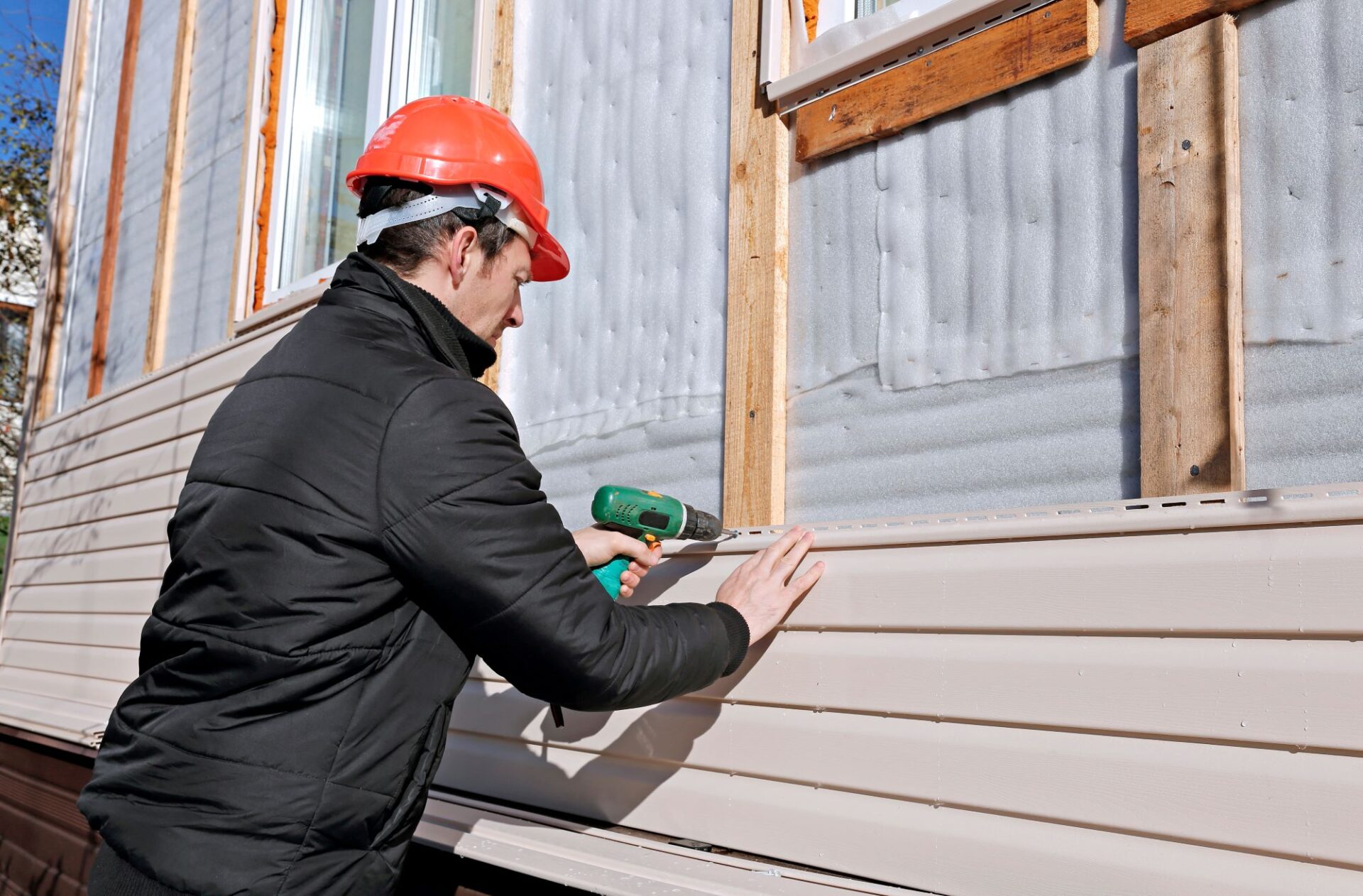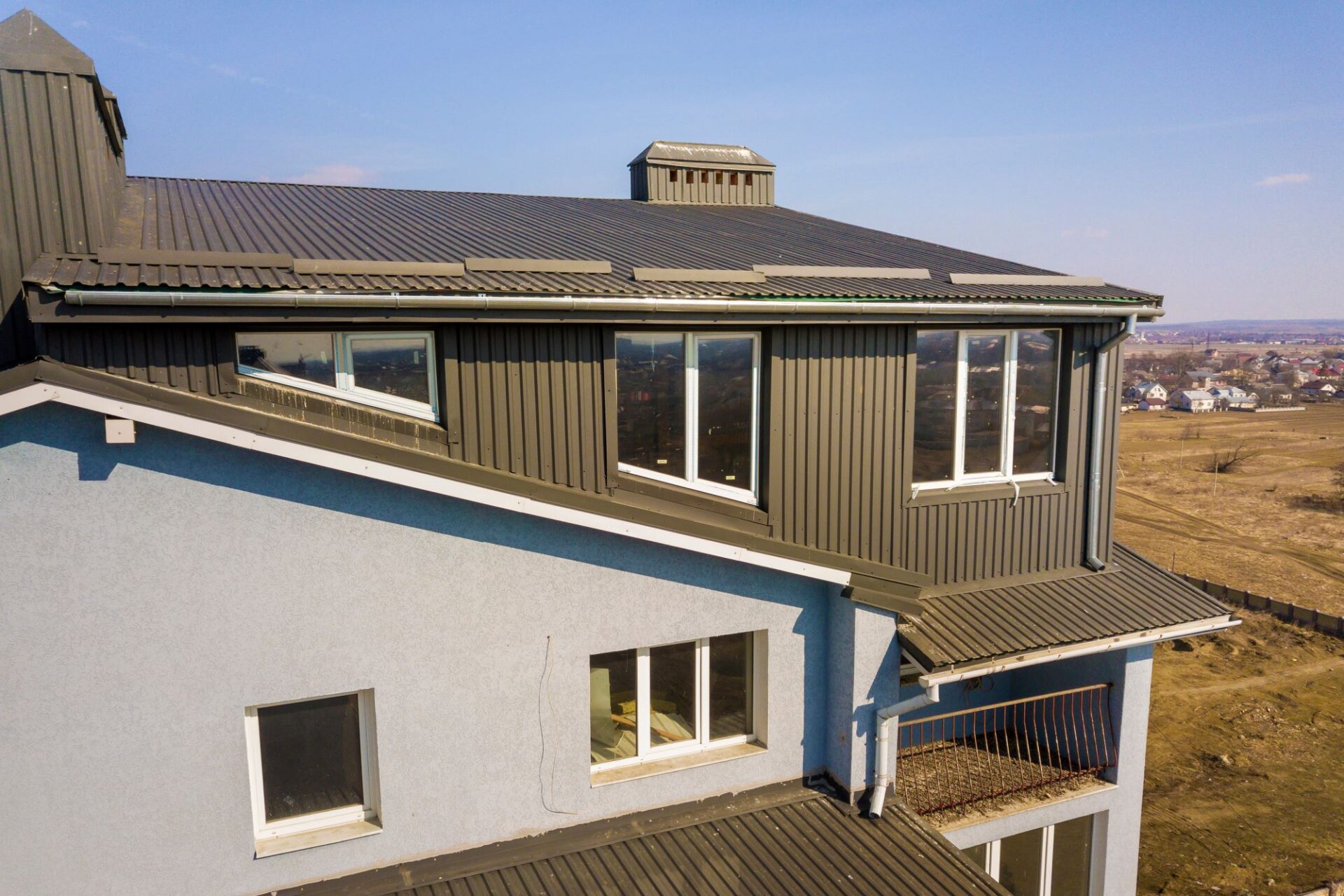Choosing the best siding style for your home is a huge decision you have to make. And since many options are available, it can be challenging to take a pick. But that should be relatively easy if you consider factors like cost, durability, maintenance, and your home’s architectural style.
Moreover, siding is one of the most expensive investments you have to make for your home’s exterior. So, before installing, it’s essential to consider all the options and not automatically settle for the cheapest one; poor-quality siding can affect your home’s value. Also, ensure a certified contractor handles the installation process.
Additionally, siding maintenance is vital to maximize and extend the protective material’s lifespan. This includes regular inspections to spot issues before they cause structural damage.
And when there are apparent issues, it can be baffling to decide whether repairs or a complete overhaul would be needed. The cost of siding repair vs replacement is one of the aspects to take into account in this regard, helping you carry out the best project without breaking the bank.
Keep reading this article to learn the different types of siding and each one’s pros and cons, helping you make the right choice for your home.
Table of Contents
Metal Siding
Metal siding was one of the well-known styles of the 20th century that’s recently regained popularity. It’s durable, low-maintenance, easy to install, and has various options, like zinc, aluminum, seamless steel, and copper.
Pros
- It’s an ideal option if you live in an area with harsh weather conditions.
- It’s fireproof and noncombustible, perfect for locations at risk for wildfires.
- It can be repurposed or recycled.
- It’s corrosion-resistant.
- It’s impervious to termites.
- It’s energy-efficient—it diverts sunlight with its reflective features. This results in lower air conditioning energy consumption compared to other siding materials.
Cons
- It’s not soundproof.
- It fades over time.
- Dents are difficult to fix. Any hard impact from vehicles, trees, or tools like hammers can dent a metal panel. And since it’s hard and heavy, a DIY repair would be difficult.
- It can easily rust.
- It changes color quickly.
- Its installation requires professional expertise; you can’t DIY the process.
Metal siding has several benefits, but it has its own weaknesses, too. So before buying and installing it, understand everything about the material.
Vinyl Siding
Vinyl siding is another popular option loved especially by people with smaller homes. It comes in various colors, and it’s relatively inexpensive and easy to install
Pros
- It’s fire-resistant.
- It’s easy to clean—you can simply use a scrubber, soap, and a hose.
- It’s durable.
- Unlike metal siding, the installation process is more straightforward.
- If properly waterproofed, it won’t rot, warp, or chip.
- It’s low- maintenance.
Cons
- Compared with other siding types, vinyl fades more quickly, and paint isn’t an option since it’ll crack and peel after a while.
- It can lower your home’s resale value because of its flat appearance.
- Minor damages can’t be patched. Instead, you’ll have to replace the entire siding.
- The insulation can easily trap water vapor, causing more damage to the siding.
The pros and cons presented above should help you decide whether or not to go for vinyl siding. To obtain more information about the material, contact an expert for more advice before installing it.
Wood Siding
Most homeowners desire wood siding because of its attractive appearance, natural touch, and eco-friendliness. Like vinyl, it’s one of the siding choices that completely transform your home. It can be obtained in multiple arrangements, like vertical and shingle boards. Depending on their budget, homeowners can achieve any look they desire.
This type of siding can last 20-40 years if maintained properly. It’s also known for its historical beauty since it’s one of the oldest types in the market. Most wood sidings are made from pine and redwood.
Pros
- Its versatility and aesthetic appeal can enhance your home’s value.
- Its natural sculptural qualities make it easy to install.
- It’s eco-friendly since it undergoes a non-toxic manufacturing process.
Cons
- Maintaining its appearance and quality requires regular maintenance, repair, and caulking.
- It’s prone to damage by insects, warping, and rot.
- It’s combustible and, thus, flammable.
- It’s not as durable as other siding types.
Besides the pros and cons, you need to consider your budget before installing wood siding. The beauty and quality of this type of material hugely depend on how much you can invest.
Brick Siding
Brick has been one of the classic siding materials in the market for years. It’s highly durable until it needs maintenance work, like tuckpointing, which is rarely required. Unlike wood or vinyl, brick doesn’t fade in the sun.
Most homeowners who want to turn their houses into investment properties prefer brick siding because of its longevity. This quality can be reinforced with a waterproof membrane.
Pros
- It’s eco-friendly since it originates from natural resources, including clay and shale.
- It’s recyclable.
- It’s not prone to rot, melt, or warping.
- It comes in a variety of shades.
- It’s long-lasting and can withstand harsh climates.
- It’s low-maintenance.
Cons
- It’s costly.
- Installation can be time-consuming and labor-intensive because the foundation needs to be extremely strong to endure the brick siding’s weight.
Brick siding is a significant financial investment, but its undeniable advantages justify it. However, it’s also a must to take note of its downsides to ensure you’re making the best choice.
Fiber Cement Siding
Fiber cement is made from a mixture of cement and wood pulp. It can last many years, primarily because it can withstand extreme weather conditions. On the flip side, the installation process requires expert help.
This siding type has a high resale value thanks to its aesthetic appeal. Besides, there are various fiber cement siding brands to choose from.
Pros
- It’s fire-resistant.
- It’s low-maintenance.
- It’s durable.
Cons
- You can’t DIY the installation process; thus, it can be expensive.
- It absorbs a lot of moisture.
When deciding on a suitable siding material, some crucial things to consider are ease of maintenance, durability, and aesthetics, which are offered by fiber cement siding.
Composite Siding
Composite siding is comprised primarily of wood. It’s an ideal choice for homes that receive significant amounts of sunlight and are usually exposed to harsh weather conditions. In addition, it can spruce up your exterior due to its aesthetic appeal. The expertise of a professional is essential if you want to install it on your property.
Pros
- It’s budget-friendly.
- It allows for easy installation.
- It increases the home’s value.
- It’s weatherproof.
Cons
- Its color fades over time.
- It’s not biodegradable.
Composite siding is made of wood fiber and plastic and can also be made from recycled materials. It comes in a range of interesting designs. If you fancy its qualities, you can consult an expert in your locality to help with the selection and installation.
Cedar Plank Siding
It’s one of the most appealing types of siding, especially among homeowners who prefer traditional designs. Cedar plank siding can be formed into various styles, like horizontal lap panels, shakes, or shingles.
Pros
- It can increase your home’s resale value.
- It’s biodegradable.
- It’s pest-resistant.
- It can blend well with other types of siding.
- It has a natural oil that helps it withstand destruction from rain, floods, winds, etc.
Cons
- Installation requires professional help.
- It needs more maintenance compared to other siding types.
- It’s not fire-resistant.
- It was expensive.
- It has a shorter lifespan.
The strength of cedar plank differs from species to species. But if you’re looking for lightweight wood that can withstand a barrage of environmental elements, cedar is the one for you.
Stucco Siding
It’s another popular siding material that’s relatively inexpensive. Stucco siding is also known to resist strong winds and heavy rains, preventing your property from destruction.
Pros
- It’s fire-resistant.
- It’s eco-friendly since it’s not manufactured with chemicals.
- It’s durable.
- It’s easy to repair.
Cons
- It absorbs a lot of moisture.
- It’s high maintenance to prevent cracks and holes from enlarging.
- It can be stained easily.
Stucco siding is a mixture of sand, lime, and water cement. In addition, polymers and other agents ensure various flexibility levels that improve this material’s resilience.
Stone Veneer Siding
Granite, slate, limestone, and other types of stone can be used to make stone veneer siding. It’s artificial, which makes it inexpensive compared to different siding styles. If installed correctly, stone veneer siding can bring a natural look to your property.
Pros
- It’s as durable as natural stone.
- It’s less costly.
- It’s lightweight, making it easier to cut while installing.
- It’s weatherproof.
Cons
- It fades easily.
- You may need to alter your foundation to help it handle the weight of the stone veneer.
- It’s often affected by moisture if not sealed properly.
- It can’t be recycled.
- It breaks easily
Stone veneer siding is the ideal choice if you’re after the natural appeal of stone but not willing to shell out that much.
Conclusion
Siding is an effective tool to reinforce your home’s structural integrity and boost its value. However, its durability differs depending on the material. The above article has illustrated the best siding styles, including their pros and cons, helping you make the right choice. Afterward, look for a local siding expert to help you with the selection and installation.






